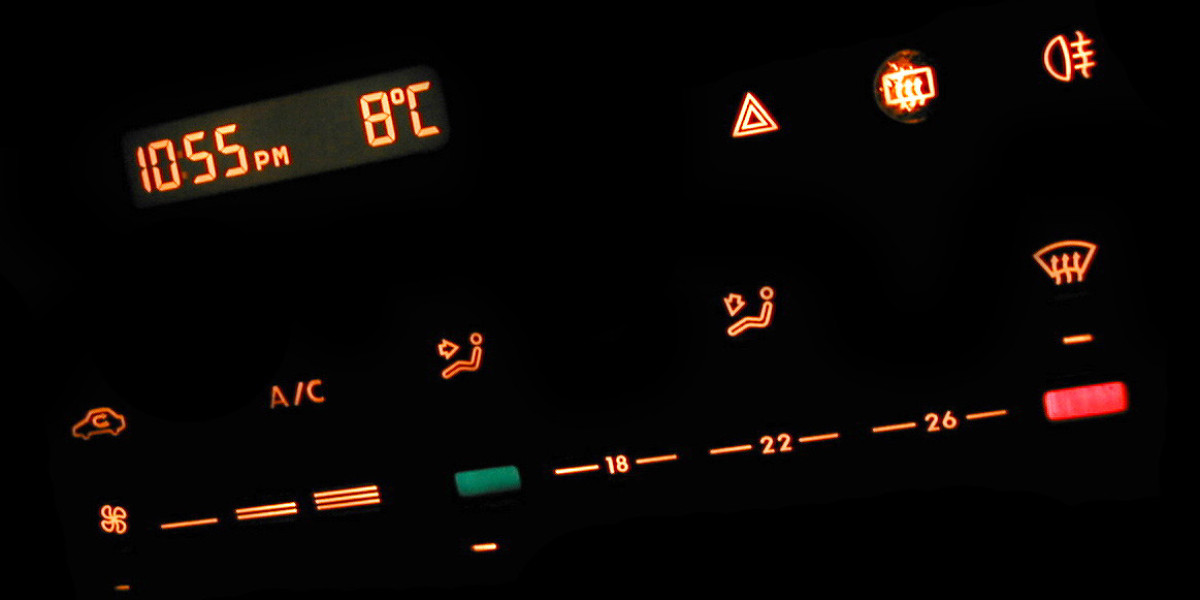Best Muscle Growth Steroids, Cutting, Anabolic Steroids For Bodybuilding, Is Steroids Testosterone, Do Bodybuilders Use Steroids, Steroids For Muscles By CrazyBulk
The latest health and wellness news from Maryland
> Maryland’s health department recently issued a public‑health advisory on the misuse of anabolic steroids among athletes and bodybuilders. The notice warns that non‑prescribed steroid use is linked to serious medical complications, including heart disease, liver damage, hormonal imbalance, and psychological disorders.
---
Legal status of steroids
| Status | What it means for users |
|---|---|
| Prescription only | Steroids can be legally obtained by a licensed physician for legitimate medical conditions (e.g., delayed puberty, severe muscle wasting). |
| Controlled substance | Possession without a prescription is illegal under state and federal law. Penalties include fines, imprisonment, or both. |
| Illicit distribution | Selling steroids without a prescription is a separate felony that carries harsher sentences. |
> Bottom line: Non‑prescribed use of anabolic steroids is illegal in New York State and can lead to criminal charges.
---
2. How Anabolic Steroids Work (What Happens Inside the Body)
| Step | Mechanism | Key Effect |
|---|---|---|
| 1. Entry | Oral steroids are absorbed through the digestive tract; injectable steroids bypass first‑pass metabolism. | Rapid rise in circulating steroid concentration. |
| 2. Binding | Steroid molecules bind to intracellular androgen receptors (AR) in muscle cells, liver cells, and other tissues. | Receptor activation leads to gene transcription changes. |
| 3. Gene Activation | The AR–steroid complex translocates to the nucleus, attaches to specific DNA sequences called Androgen Response Elements (ARE). | Upregulation of genes that increase protein synthesis (e.g., ribosomal proteins) and downregulation of catabolic genes. |
| 4. Proteostasis Shift | Enhanced mRNA translation, increased amino acid uptake, decreased proteolysis. | Net positive nitrogen balance → muscle hypertrophy. |
| 5. Systemic Effects | Hormonal feedback (suppression of endogenous testosterone), liver metabolism changes, cardiovascular strain. | Possible side‑effects (hepatic toxicity, hypertension). |
---
3. Key Molecular Pathways Activated
| Pathway | Primary Mediators | Effect on Muscle |
|---|---|---|
| Androgen Receptor Signaling | AR, SRC-1, MED15 | Transcription of IGF‑1, MyoD, cyclin D; promotes growth and satellite cell activation. |
| PI3K–Akt–mTORC1 Axis | PI3K, Akt (PKB), mTORC1, S6K1, 4E-BP1 | Drives protein synthesis via phosphorylation of ribosomal proteins and initiation factors. |
| MAPK/ERK Pathway | Ras, Raf, MEK, ERK | Supports cell proliferation; interacts with AR to upregulate MyoD. |
| GSK‑3β Inhibition | Akt-mediated phosphorylation | Stabilizes β‑catenin, facilitating transcription of growth genes. |
| Transcriptional Coactivators | PGC‑1α/PGC‑1β, p300/CBP, SRC‑2 | Modulate mitochondrial biogenesis and oxidative metabolism. |
---
4. Practical Implications for Strength Training
| Aspect | How the mechanisms inform training strategy |
|---|---|
| Training Frequency | Higher frequency (≥3–4 sessions per muscle group) keeps signaling molecules active, allowing more hypertrophic stimuli. |
| Volume & Intensity | Sufficient load (≈70‑85 % 1RM) for ~6–12 reps activates mTOR and increases protein synthesis; volume should be progressive to sustain stimulus. |
| Recovery | Adequate sleep and nutrition support the anabolic response; over‑training can blunt signaling pathways. |
| Nutrition | Protein intake (~1.6 g · kg⁻¹ · day⁻¹) provides amino acids, especially leucine, to trigger mTOR. Carbohydrates replenish glycogen, enhancing training capacity and hormonal milieu. |
| Supplementation | Creatine monohydrate improves strength; whey protein supports synthesis; branched‑chain amino acids (BCAA) can reduce muscle breakdown during workouts. |
---
4. Practical Recommendations for a Beginner
| Goal | How to Achieve It | Key Takeaways |
|---|---|---|
| Increase Strength | Lift progressively heavier weights – use a 5‑2‑1 or linear progression plan; focus on compound lifts (squat, deadlift, bench). | More reps → more volume; more sets → more load. |
| Build Muscle Mass | Aim for 10–12 reps per set at 70‑80 % of one‑rep max; perform 3–4 sets per exercise. | Moderate loads + high volume = hypertrophy. |
| Improve Endurance | Perform 20+ reps per set, newborhooddates.com lighter load (≤60 % 1RM). | Longer time under tension → muscular stamina. |
| Recovery & Adaptation | Include rest days; alternate training focuses; ensure sleep and nutrition. | Muscles grow while resting, not during lifts. |
---
Practical Training Prescription
| Goal | Typical Repetition Range per Set | Load (Relative % of 1RM) | Sets per Exercise | Notes |
|---|---|---|---|---|
| Hypertrophy | 8–12 reps | 65–75 % | 3–5 | Emphasize muscle‑tension and moderate volume. |
| Strength (1–5RM) | 1–6 reps | 80–95 % | 4–6 | Focus on maximal force, longer rests (2–5 min). |
| Power | 3–5 reps | 60–80 % | 3–5 | Fast concentric movement, plyometric drills. |
| Endurance | >15 reps | <50 % | 1–3 | Higher repetitions, shorter rests (30–90 s). |
---
4. How to Choose the Right Rep Scheme
| Goal | Suggested Rep Range & RPE | Why it Works | Typical Rest Interval |
|---|---|---|---|
| Strength | 1‑5 reps at RPE 8‑9 (≈85–90 % 1RM) | Heavy load stimulates type‑II fiber recruitment and neuromuscular adaptations. | 2‑4 min |
| Hypertrophy (muscle growth) | 6‑12 reps at RPE 7‑8 (≈70‑80 % 1RM) | Provides optimal mechanical tension + metabolic stress; balanced stimulus for muscle fibers. | 60‑90 s |
| Muscular Endurance | 15+ reps at RPE 5‑6 (≈50‑60 % 1RM) | Improves mitochondrial density & capillary growth; increases time under load. | 30‑45 s |
| Power / Explosive Strength | 1‑3 reps at RPE 9‑10 (high % but focus on speed) | Emphasizes rate of force development; uses low volume, high velocity. | 2‑5 min |
| Recovery or Low‑Intensity Workouts | Light weights, high reps at RPE 3‑4 | Promotes blood flow & active recovery without taxing the nervous system. | 60‑90 s |
> Note: The table is a simplification; actual training programs must balance volume, intensity, and periodization based on goals.
---
6. Practical Implementation
Below are three sample training scenarios that illustrate how RPE can be used to structure workouts while respecting the constraints of time, volume, and injury risk.
Scenario A – 30‑Minute Strength Session (Time‑Limited)
| Segment | Duration | Intensity (RPE) | Comments |
|---|---|---|---|
| Warm‑up & Mobility | 5 min | — | Light dynamic stretches |
| Main Lift (Squat or Bench) | 12 min (3 × 4 reps at 60 % 1RM) | 7–8 | Keep movement quality high; use a spotter if needed. |
| Accessory Work (Rows, Triceps Extensions) | 8 min (2 × 6‑8 reps each) | 5 | Focus on controlled tempo. |
| Cool‑down | 3 min | — | Light foam rolling or static stretches. |
Key Points:
- Intensity: Moderate (≈60 % of 1RM), allowing for good form and sufficient volume.
- Tempo: Slow eccentric phase (2–3 s) to increase time under tension; concentric phase should be controlled.
- Rest Intervals: Short rest periods (30‑45 sec between accessory sets, 60‑90 sec between main lifts) maintain a moderate heart rate without excessive fatigue.
4. How This Workout Supports Muscle Growth
| Mechanism | Why It Matters for Hypertrophy |
|---|---|
| Mechanical Tension | The load (≈60–70 % of 1RM) creates significant tension in muscle fibers, stimulating signaling pathways that drive protein synthesis. |
| Muscle Damage & Microtrauma | The eccentric component and moderate volume produce micro‑damage to sarcomeres, prompting repair processes that result in thicker fibers. |
| Metabolic Stress | Short rest intervals lead to lactate accumulation, which increases cell swelling and hormone release (e.g., IGF‑1), both of which aid muscle growth. |
| Protein Synthesis Signaling | The combination of tension, damage, and metabolic cues activates mTOR pathways that increase translation of contractile proteins. |
---
4. How the Plan Works for You
- Time‑Efficient: 3 sessions per week, each lasting ~45 minutes (including warm‑up).
- Progressive Overload: By adding more weight or reps each set, your muscles are continually challenged.
- Balanced Stimulus: All major muscle groups hit at least twice a week; core and stability work included for injury prevention.
- Recovery Focused: Adequate rest days between heavy sessions allow full muscular repair and growth.
5. Tips to Maximize Results
| Tip | Why It Helps |
|---|---|
| Prioritize Compound Movements (squat, bench, deadlift) | These recruit the most muscle fibers per rep; efficient for strength & size. |
| Use a Deload Week Every 4–6 Weeks | Prevent overtraining and keep progress linear. |
| Track Load and Volume | Seeing incremental increases keeps motivation high and ensures progressive overload. |
| Fuel Properly (Protein + Carbs) | Protein is essential for muscle repair; carbs provide energy for heavy lifts. |
| Get Adequate Sleep (7–9 hrs) | Muscle growth occurs during rest; sleep deprivation hampers recovery. |
---
4️⃣ Putting It All Together – Sample Routine
> Assumption: 3‑day split, 2–3 days of rest in between.
| Day | Exercise (Sets × Reps) | Focus |
|---|---|---|
| 1 – Upper | Bench Press 4×6, Bent‑Over Row 4×8, Overhead Press 3×10, Pull‑Up 3×max | Strength & hypertrophy |
| 2 – Lower | Back Squat 4×5, Romanian Deadlift 3×8, Leg Press 3×12 | Compound power |
| 3 – Full Body | Power Clean 3×5, Push‑Press 3×6, Kettlebell Swing 3×15 | Speed & conditioning |
Rest: 2–4 min between heavy sets, 90 sec for accessory work.
Progression: add 1–2 kg each week if form is clean.
---
7️⃣ Training Frequency
| Body Part | Ideal Weekly Sets | Suggested Days |
|---|---|---|
| Upper (Chest/Back) | 6–8 sets | 2× per week |
| Lower (Quads/Hamstrings) | 4–5 sets | 1–2× per week |
| Core | 3–4 sets | Every workout |
Rationale:
- Volume‑to‑Recovery balance: Muscles adapt when given enough volume but also need adequate recovery.
- Prevent overtraining: Too many sessions can impair growth and increase injury risk.
? Putting It All Together – Sample Weekly Routine
| Day | Focus | Key Exercises (sets × reps) |
|---|---|---|
| Mon | Upper 1 | Bench Press 4×6, Pull‑ups 3×8, Overhead Press 3×6, Face‑pulls 3×12 |
| Tue | Lower 1 | Back Squat 5×5, Romanian Deadlift 3×8, Calf Raise 4×15 |
| Wed | Rest or Light Mobility | |
| Thu | Upper 2 | Incline DB Bench 4×8, Barbell Row 4×6, Lateral Raises 3×12, Tricep Pushdown 3×10 |
| Fri | Lower 2 | Front Squat 5×5, Hip Thrust 3×8, Hamstring Curl 3×10, Seated Calf Raise 4×15 |
| Sat | Optional Active Recovery (e.g., walking, light cycling) | |
| Sun | Rest |
Key Points:
- Progressive Overload: Aim to increase the weight or reps gradually each week. Small increments like adding 5 pounds or an extra rep per set can be effective.
- Volume and Frequency: The plan includes two workouts per muscle group each week, which is ideal for hypertrophy.
- Rest Periods: Keep rest periods between 60-90 seconds to balance recovery with maintaining workout intensity.
Equipment Needed:
- Dumbbells or barbells
- Bench (or an alternative stable surface)
- Access to a gym or home equipment setup







